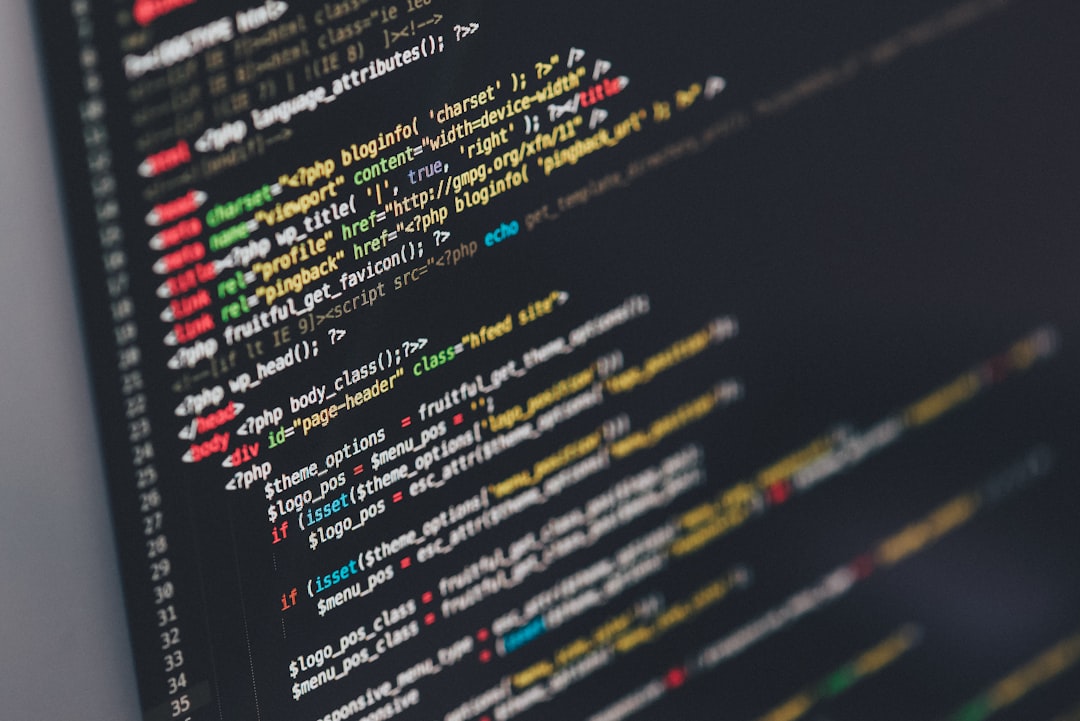This article explores the intersection of technology and compliance, discussing the significance of technology-driven compliance in business, the impact of technology on compliance processes, the changing landscape of compliance regulations, technology solutions for compliance management, case studies of successful integration, ethics and compliance in the face of technological advancements, crucial considerations for compliance professionals, managing strategic risks and opportunities, future trends in security and compliance, and collaboration and integration for compliance.

Introduction
Exploring the Intersection of Technology and Compliance The intersection of technology and compliance has become increasingly significant in the modern business landscape, shaping the way organizations navigate the changing regulatory environment. As businesses seek to enhance their compliance processes and leverage technological advancements, it is essential to understand the implications, challenges, and opportunities associated with this intersection. This article provides an in-depth exploration of the impact of technology on compliance processes, the changing landscape of compliance regulations, technology solutions for compliance management, case studies demonstrating successful integration, ethics and compliance in the face of technological advancements, crucial considerations for compliance professionals, managing strategic risks and opportunities, future trends in security and compliance, and collaboration and integration for compliance.
Significance of Technology-Driven Compliance in Business The significance of technology-driven compliance in business cannot be overstated, as it plays a pivotal role in ensuring regulatory adherence, risk mitigation, and operational efficiency. By harnessing technology to streamline compliance processes, organizations can proactively address evolving regulatory requirements, enhance transparency, and mitigate potential compliance risks. For instance, the integration of blockchain technology has transformed supply chain management and regulatory reporting, providing immutable and transparent records that strengthen compliance efforts and accountability. Furthermore, the utilization of artificial intelligence (AI) and machine learning has revolutionized compliance tasks by automating repetitive processes, analyzing vast datasets, and identifying potential compliance anomalies, thereby enhancing the overall compliance posture of businesses.
Overview of Challenges and Opportunities in the Evolving Landscape The evolving landscape presents both challenges and opportunities for businesses seeking to navigate the intersection of technology and compliance. While technological advancements offer innovative solutions for compliance management, they also introduce complexities related to data governance, privacy, and ethical considerations. As organizations embrace new technologies, they must address the challenges associated with managing the vast amounts of data generated by IoT devices, ensuring ethical decision-making processes, and aligning their values with those of their workforce and society in terms of compliance and technology. However, these challenges also present opportunities for businesses to differentiate themselves by integrating technology and compliance to promote ethical practices, talent acquisition, and retention, ultimately driving sustainable growth and resilience.
 Impact of Technology on Compliance Processes
Impact of Technology on Compliance Processes
The impact of technology on compliance processes is profound, as it revolutionizes the way businesses manage and uphold regulatory standards. Advancements in technology have provided new tools and platforms that are instrumental in facilitating compliance efforts. For instance, the integration of blockchain technology has significant implications for supply chain management and regulatory reporting. By leveraging blockchain, businesses can enhance transparency, traceability, and authenticity in their supply chains, thereby ensuring compliance with industry regulations and ethical standards.
Moreover, the utilization of artificial intelligence (AI) and machine learning has been transformative in automating and enhancing compliance tasks. These technologies enable the rapid analysis of vast datasets, identification of anomalies, and proactive risk management. For example, AI-powered compliance management systems can autonomously monitor transactions, detect suspicious activities, and generate real-time reports, thereby strengthening compliance processes and mitigating potential risks. This demonstrates how technology not only impacts but significantly improves compliance processes in today’s dynamic business environment.
Advancements in Technology: Influencing Compliance Efforts The advancements in technology have fundamentally influenced the landscape of compliance efforts, offering new opportunities and challenges for organizations. With the emergence of innovative technological solutions, businesses are better equipped to streamline compliance processes, enhance transparency, and mitigate risks. For instance, the adoption of cloud-based compliance management software has enabled organizations to centralize compliance data, automate compliance tasks, and facilitate collaboration among compliance teams. This technological advancement has resulted in improved efficiency, accuracy, and scalability in managing compliance efforts, demonstrating the transformative impact of technology on compliance processes.
Blockchain Technology: Implications for Supply Chain Management and Regulatory Reporting The implications of blockchain technology for supply chain management and regulatory reporting are exemplified by a global logistics company that successfully integrated blockchain into its supply chain operations. By leveraging blockchain, the company established a secure and transparent system for tracking the movement of goods, ensuring compliance with regulations, and enhancing trust and accountability across its supply chain network. The immutable nature of blockchain records provided regulators and stakeholders with real-time visibility into the provenance and handling of products, thereby strengthening the company’s compliance posture and operational resilience.
Utilization of AI and Machine Learning: Automation and Enhancement of Compliance Tasks The utilization of AI and machine learning has facilitated the automation and enhancement of compliance tasks, enabling organizations to proactively address regulatory requirements and risk management. For instance, a financial institution implemented AI-driven compliance algorithms to analyze transaction data and detect potential money laundering activities. This AI-powered solution significantly reduced the time and resources required for compliance screenings, improved accuracy in identifying suspicious transactions, and ensured regulatory compliance with evolving AML regulations. By leveraging AI and machine learning, organizations can enhance the efficiency and effectiveness of their compliance processes, thereby navigating the evolving landscape of regulatory requirements and technological advancements.
Changing Landscape of Compliance Regulations
The evolving landscape of compliance regulations is significantly impacted by the management of data generated by IoT devices. The proliferation of interconnected IoT devices has raised concerns related to data privacy, security, and regulatory compliance for businesses across various industries. For example, in the healthcare sector, the use of IoT devices for patient monitoring and data collection requires compliance with strict regulations such as the Health Insurance Portability and Accountability Act (HIPAA) to ensure the privacy and security of patient information.
Furthermore, the utilization of IoT devices in supply chain management has introduced complexities in ensuring compliance with regulations governing data protection, transparency, and ethical sourcing. Companies are now required to navigate the intricate web of regulations to ensure that their use of IoT devices aligns with evolving compliance standards, presenting both challenges and opportunities in leveraging technology for operational efficiency while maintaining regulatory adherence. As a result, businesses are compelled to develop robust data governance frameworks, implement risk management strategies, and integrate advanced technologies to address the compliance implications of IoT-generated data, reflecting the dynamic nature of compliance regulations in today’s business landscape.
Management of Data Generated by IoT Devices: Growing Concern for Compliance The growing concern for compliance related to the management of data generated by IoT devices is exemplified by the challenges faced by a multinational manufacturing company. As the company implemented IoT devices to optimize its production processes and supply chain operations, it encountered regulatory complexities associated with data privacy and security. To address these challenges, the company developed a comprehensive data governance strategy, integrating encryption protocols, access controls, and compliance monitoring systems to ensure the protection and ethical use of IoT-generated data. By proactively addressing compliance concerns, the company not only strengthened its regulatory adherence but also positioned itself as a responsible and trustworthy industry leader, fostering stronger stakeholder relationships and sustainable business practices.
Technology Solutions for Compliance Management
In response to the dynamic compliance landscape, various technology solutions have emerged to support compliance management. AI and machine learning applications have been instrumental in analyzing large datasets, identifying patterns, and predicting potential compliance issues, thereby enabling proactive risk management and decision-making.
Another notable technology solution for compliance management is the utilization of blockchain technology. This innovative approach has significant implications for supply chain management and regulatory reporting. For instance, blockchain can provide an immutable and transparent record of transactions, enhancing the traceability and authenticity of products, which is crucial for compliance with regulations related to product quality and sourcing.
Moreover, compliance management can benefit from the management of data generated by IoT devices. With the proliferation of IoT devices, the volume of data being generated has increased exponentially, posing a growing concern for compliance professionals. Technology solutions that can effectively manage and analyze this data are essential for ensuring compliance with regulations governing data privacy and security, as well as for identifying any potential risks or vulnerabilities associated with the use of IoT devices. These solutions can enable businesses to navigate the complexities of compliance in the ever-expanding IoT landscape, ensuring that they adhere to regulatory requirements and protect sensitive information.
Implications of AI and Machine Learning in Compliance Management The implications of AI and machine learning in compliance management extend to the proactive identification and mitigation of compliance risks. For example, a global financial services firm integrated AI-powered compliance analytics to monitor its transactional data, enabling the early detection of potential compliance anomalies and irregularities. This proactive approach not only enhanced the firm’s regulatory adherence but also optimized its compliance resources by focusing on high-risk areas, thereby demonstrating the strategic advantage of leveraging technology for compliance management.
 Case Studies of Successful Integration
Case Studies of Successful Integration
Real-world case studies provide valuable insights into the successful integration of technology and compliance. Lessons learned from effective integration into compliance frameworks can guide organizations in implementing best practices and leveraging technology to enhance their compliance processes and overall governance structure.
For example, a multinational retail corporation successfully integrated blockchain technology into its supply chain management to ensure compliance with stringent regulatory reporting requirements. By utilizing blockchain for transparent and immutable record-keeping, the corporation enhanced its compliance efforts by providing regulators with real-time access to relevant data, ensuring accuracy and integrity in reporting.
Similarly, a financial institution implemented AI and machine learning algorithms to automate and enhance its anti-money laundering (AML) compliance tasks. By leveraging technology, the institution significantly reduced the time and resources required for AML screening, improved accuracy in identifying suspicious transactions, and ensured regulatory compliance with evolving AML regulations.
These case studies illustrate how organizations have strategically integrated technology into their compliance frameworks, resulting in more efficient, accurate, and proactive compliance management. By embracing innovative technological solutions, businesses can not only meet regulatory requirements but also gain a competitive edge in the evolving business landscape.
Lessons Learned from Effective Integration into Compliance Frameworks The lessons learned from effective integration into compliance frameworks emphasize the need for a strategic and forward-thinking approach to leveraging technology for compliance. Organizations that have successfully integrated technology and compliance have demonstrated the importance of proactive risk management, operational efficiency, and ethical governance. For instance, a healthcare organization implemented AI-driven compliance monitoring systems, enabling real-time analysis of patient data to ensure adherence to privacy regulations and ethical standards. By embracing technology, the organization not only enhanced its compliance processes but also elevated its standard of care, fostering trust and confidence among patients and stakeholders. These lessons underscore the transformative impact of technology on compliance and the strategic advantages of effective integration.
 Ethics and Compliance in the Face of Technological Advancements
Ethics and Compliance in the Face of Technological Advancements
The rapid advancement of technology has significantly impacted the landscape of compliance, emphasizing the critical role of ethics in guiding organizational practices. As businesses integrate new technologies into their operations, they must ensure that ethical considerations remain at the forefront of their compliance efforts. For example, the use of artificial intelligence (AI) and machine learning in compliance tasks necessitates a robust ethical framework to govern the responsible implementation of these technologies.
Establishment of Checks and Balances for Ethical Decision-making Processes The establishment of checks and balances for ethical decision-making processes is exemplified by a leading technology company that implemented AI ethics committees to oversee the deployment of AI-driven solutions. These committees comprised diverse stakeholders, including compliance professionals, ethicists, and technologists, who collaborated to ensure the ethical design, usage, and impact of AI technologies within the organization. By embedding ethical considerations into their technological initiatives, the company demonstrated a commitment to responsible innovation and compliance with ethical standards, setting a precedent for ethical governance in the face of technological advancements.
Importance of Ethics Amid Rapid Technological Advancements The importance of ethics amid rapid technological advancements is underscored by the pivotal role of ethics and compliance in guiding organizations through transformational changes. For instance, a global telecommunications company established a comprehensive ethics and compliance program to address the ethical implications of emerging technologies such as artificial intelligence, big data, and IoT. By proactively integrating ethical considerations into its technological initiatives, the company not only mitigated potential compliance risks but also built a culture of integrity and responsibility, fostering trust and confidence among customers, employees, and stakeholders. This proactive approach to ethics and compliance amid technological advancements highlights the critical role of ethical governance in navigating the evolving landscape.
Crucial Considerations for Compliance Professionals
Continuous education and expanding horizons are crucial for Chief Compliance Officers and compliance professionals to stay abreast of technological developments and regulatory changes. This involves actively seeking out training, workshops, and industry events to enhance their knowledge of new compliance technologies and regulations. For example, attending webinars on AI and machine learning in compliance management or seminars on the impact of blockchain on supply chain compliance can provide valuable insights and practical strategies for implementing these technologies effectively within an organization.
In addition to continuous education, compliance professionals must also prioritize expanding their horizons by staying informed about emerging trends and best practices in the industry. For instance, they can engage in knowledge-sharing forums, join professional networks, and participate in industry conferences to gain exposure to diverse perspectives and innovative approaches to compliance. By doing so, they can proactively identify new opportunities for leveraging technology to enhance compliance processes and mitigate regulatory risks.
Balancing innovation and compliance in a rapidly changing landscape requires a proactive and adaptive mindset to effectively navigate the evolving compliance requirements. Compliance professionals need to foster a culture of agility and resilience within their teams to respond to the dynamic nature of regulatory changes and technological advancements. They should encourage an environment where experimentation and continuous improvement are valued, enabling the integration of innovative compliance solutions while maintaining a strong ethical foundation. This approach can empower compliance professionals to proactively address emerging risks and seize opportunities presented by evolving compliance regulations, thereby driving sustainable business growth and resilience in the face of technological disruptions.
Managing Strategic Risks and Opportunities
The convergence of ESG and E&C presents strategic risks and opportunities for organizations, emphasizing the need for businesses to align their values with those of their workforce and society, integrating ethical considerations into their compliance and technology strategies. This alignment is crucial as it allows organizations to demonstrate commitment to social responsibility, environmental sustainability, and ethical business practices, leading to improved brand reputation and stakeholder trust. An example of this integration is evident in the approach taken by a leading technology company that has aligned its compliance efforts with ESG principles, focusing on reducing its carbon footprint and ensuring ethical sourcing of materials for its products. This strategic move not only mitigated risks associated with environmental regulations but also positioned the company as an ethical industry leader, attracting socially conscious consumers and investors.
Moreover, talent acquisition and retention have emerged as key market differentiators in the evolving landscape. Businesses are recognizing the importance of recruiting individuals who possess a deep understanding of the integrated approach to compliance and technology. For instance, a financial services firm successfully navigated strategic risks and opportunities by appointing a Chief Compliance Officer (CCO) with a strong background in technology, empowering them to implement innovative compliance management systems. This strategic talent acquisition not only enhanced the firm’s compliance capabilities but also positioned it to leverage technology effectively, driving operational efficiency and mitigating compliance risks. Therefore, businesses that prioritize aligning their values with their workforce and society, along with strategic talent acquisition and retention, are better positioned to capitalize on the opportunities and navigate the risks presented by the convergence of ESG and E&C in the dynamic business landscape.
Navigating the Convergence of ESG and E&C: Impact on Businesses The convergence of ESG and E&C presents a transformative impact on businesses, influencing their approach to ethical governance, environmental sustainability, and social responsibility. For example, a multinational consumer goods company strategically aligned its compliance efforts with ESG principles, emphasizing ethical sourcing, sustainable production practices, and community engagement. This strategic alignment not only enhanced the company’s brand reputation but also fostered stronger relationships with environmentally conscious consumers and socially responsible investors, highlighting the strategic advantages of integrating ESG considerations into compliance and technology strategies.
Future Trends in Security and Compliance
The future of security and compliance is intricately linked with the advancements in AI and machine learning, which are revolutionizing how businesses manage governance, risk, and compliance. These technologies enable organizations to analyze vast amounts of data, identify patterns, and detect anomalies, thereby enhancing security measures and ensuring compliance with regulations. For example, a financial institution implemented AI-powered algorithms to monitor and analyze transactions, leading to the early detection of suspicious activities and compliance violations, ultimately strengthening their security and regulatory adherence.
In addition to the impact of AI and machine learning, preparing for future compliance regulations is essential in the rapidly evolving landscape. For instance, the European Union’s General Data Protection Regulation (GDPR) introduced stringent data protection and privacy requirements, compelling businesses to adapt their compliance strategies. Proactive collaboration between legal, compliance, and technology teams is imperative for understanding, interpreting, and implementing these regulations effectively. By working together, these teams can develop comprehensive compliance frameworks that align with legal requirements while leveraging technology to streamline processes and ensure adherence. Furthermore, building a culture of security and compliance through awareness programs and integrated considerations is crucial for instilling a mindset of responsibility and diligence across the organization. Case in point, a multinational corporation conducted regular cybersecurity training and awareness campaigns, fostering a culture where employees actively contributed to the company’s security and compliance efforts, creating a more robust and vigilant organizational environment.
The Impact of AI and Machine Learning on Security and Compliance The impact of AI and machine learning on security and compliance extends to the proactive identification and mitigation of security risks. For example, a global technology company deployed AI-powered security analytics to detect and respond to potential cybersecurity threats in real-time. This proactive approach not only strengthened the company’s security posture but also enabled them to adapt to evolving threat landscapes and compliance requirements, demonstrating the strategic advantage of leveraging technology for security and compliance.
Strategies for Preparing for Future Compliance Regulations Strategies for preparing for future compliance regulations involve a proactive and collaborative approach to aligning legal, compliance, and technology efforts. By establishing cross-functional teams, businesses can effectively interpret and implement regulatory requirements while leveraging technology solutions to streamline compliance processes and mitigate risks. For instance, a multinational financial services firm established a collaborative task force comprising legal, compliance, and technology experts to anticipate and address future compliance regulations, enabling them to proactively adapt their compliance frameworks and security measures. This collaborative approach not only positioned the firm to navigate regulatory changes but also fostered a culture of agility and innovation, driving sustainable compliance practices and operational resilience.
 Collaboration and Integration for Compliance
Collaboration and Integration for Compliance
Collaboration and integration are crucial components for addressing the complex landscape of compliance in today’s business environment. Legal, compliance, and technology teams must work closely together to navigate the intricate web of regulations and technological advancements. By fostering effective collaboration, these teams can ensure that compliance measures are aligned with the latest regulatory requirements while leveraging technology solutions to streamline processes and mitigate risks.
For instance, a leading financial institution successfully integrated compliance technology solutions by establishing cross-functional teams comprising legal, compliance, and technology experts. This collaborative approach enabled them to develop and implement a robust compliance framework that not only met regulatory standards but also leveraged technology to automate routine compliance tasks, thereby increasing efficiency and accuracy.
In addition to collaboration, integrating security and compliance considerations into the development lifecycle is paramount for organizations seeking to stay ahead of regulatory requirements. By embedding compliance measures into the fabric of product development and technological initiatives, businesses can proactively address potential compliance issues and ensure that their offerings align with industry standards and best practices. This proactive integration of compliance into the development lifecycle also allows organizations to identify and address compliance-related vulnerabilities early in the process, reducing the risk of non-compliance and associated penalties.
By emphasizing collaboration and integration, businesses can foster a culture of security and compliance, where all stakeholders are actively engaged in upholding ethical standards and regulatory adherence. This collective approach not only fortifies an organization’s compliance posture but also instills a shared sense of responsibility and accountability across teams, ultimately contributing to the overall success and sustainability of the business.





 Impact of Technology on Compliance Processes
Impact of Technology on Compliance Processes Case Studies of Successful Integration
Case Studies of Successful Integration Ethics and Compliance in the Face of Technological Advancements
Ethics and Compliance in the Face of Technological Advancements Collaboration and Integration for Compliance
Collaboration and Integration for Compliance